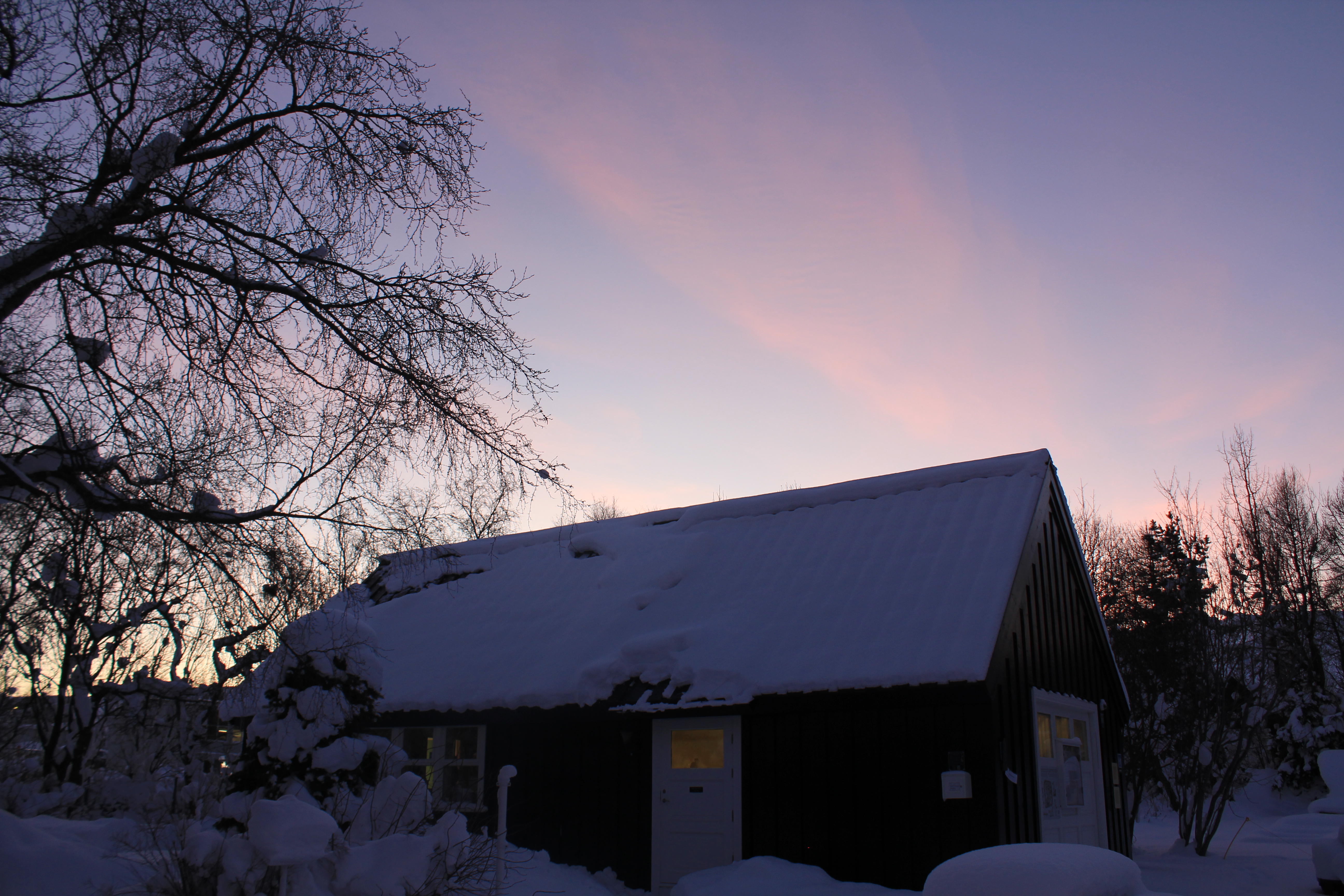Take a short visit on a short day
Ýlir is the name of the second winter month of the old nordic calender and it begins in late november. Because the sun stays low in the sky throughout, Ýlir is also known as "the month of short days". At this time most of the plants in the garden go into dormancy, but how to plants recognise when to break this?
Just like some people have difficulty waking in darkness, some plants have developed a system to detect the day length (photoperiod) as a way of regulating processes such as growth and flowering. This effect was first discoved in the 1900s with experiments by Garner and Allan on a mutant tobacco plant, the "Maryland Mammoth", which grew larger and flowered in December instead of August. The experiments identified the protein phtyochrome, which reacts to the proportion of red and far-red light to control growth. When the days are short, the proportion of far-red light is higher.

Red light in the sky as the sun dips low on the horizon
Plants were grouped as short and longday plants, while some plants where shown to be insensitive to altering daylength. The christmas cactus (Schlumbergera truncata) and poinsetta (Euphorbia pulcherrima) are well known short-day plants. These discoveries led to changes in methods used in the plant and agricultural industries, for instance many of the cut-flowers that are available year round are a result of controlling light conditions to induce flowering.

Christmas cactus is a short-day plant
Recent research has shown there are other factors that control plant reactions to day length and that vegetative growth and blooming are controlled by genetically separate systems. These discoveries may help in increasing agricultural yield and enable farmers to broaden the distribution of crop plants.
Climate change has the effect that temperature and humidity becomes increasingly independent of photoperiod. This is expected to impact plants reliant on photoperiod as a guide of when to begin growth, for example if budding at period where conditions are not suitable may lead to stunted growth.


A leaf budding in the winter and late flowering leading to wasted fruit
Research has shown that to avoid extinction, plant and animal species are migrating poleward at a rate of 17km per decade. Plants that are restricted by photoperiod will reach their migration limits faster than more adaptable plants and these restricted plants will increasingly face more competition from invasive species.
No matter the time of year, it is always nice to take a stroll through the garden and take advantage of any sunshine that comes your way. We ask that visitors at this time stay on the ploughed pathways and please also becareful of slippery ice on the paths and of snow falling from buildings and trees.

The Lystigarður still has its charm in the winter

Make use of the sunshine in the garden

Please use the ploughed pathways
